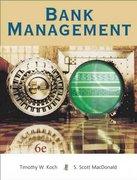Question
Please help answer questions in the picture, and there are 2 additional questions: f. Faced with a zero nominal interest rate, suppose the Fed decides

Please help answer questions in the picture, and there are 2 additional questions:
f. Faced with a zero nominal interest rate, suppose the Fed decides to purchase securities
directly to facilitate the flow of credit in the financial markets. This policy is called
quantitative easing. If quantitative easing is successful, so that it becomes easier for financial
and nonfinancial firms to obtain credit, what is likely to happen to the premium? What effect
will this have on the IS-LM diagram? If quantitative easing has some effect, is it true that the
Fed has no policy options to stimulate the economy when the federal funds rate is zero?
g. One argument for quantitative easing is that it increases expected inflation. Suppose
quantitative easing does increase expected inflation. How does that affect the LM curve in
Figure 1?

Step by Step Solution
There are 3 Steps involved in it
Step: 1

Get Instant Access to Expert-Tailored Solutions
See step-by-step solutions with expert insights and AI powered tools for academic success
Step: 2

Step: 3

Ace Your Homework with AI
Get the answers you need in no time with our AI-driven, step-by-step assistance
Get Started


